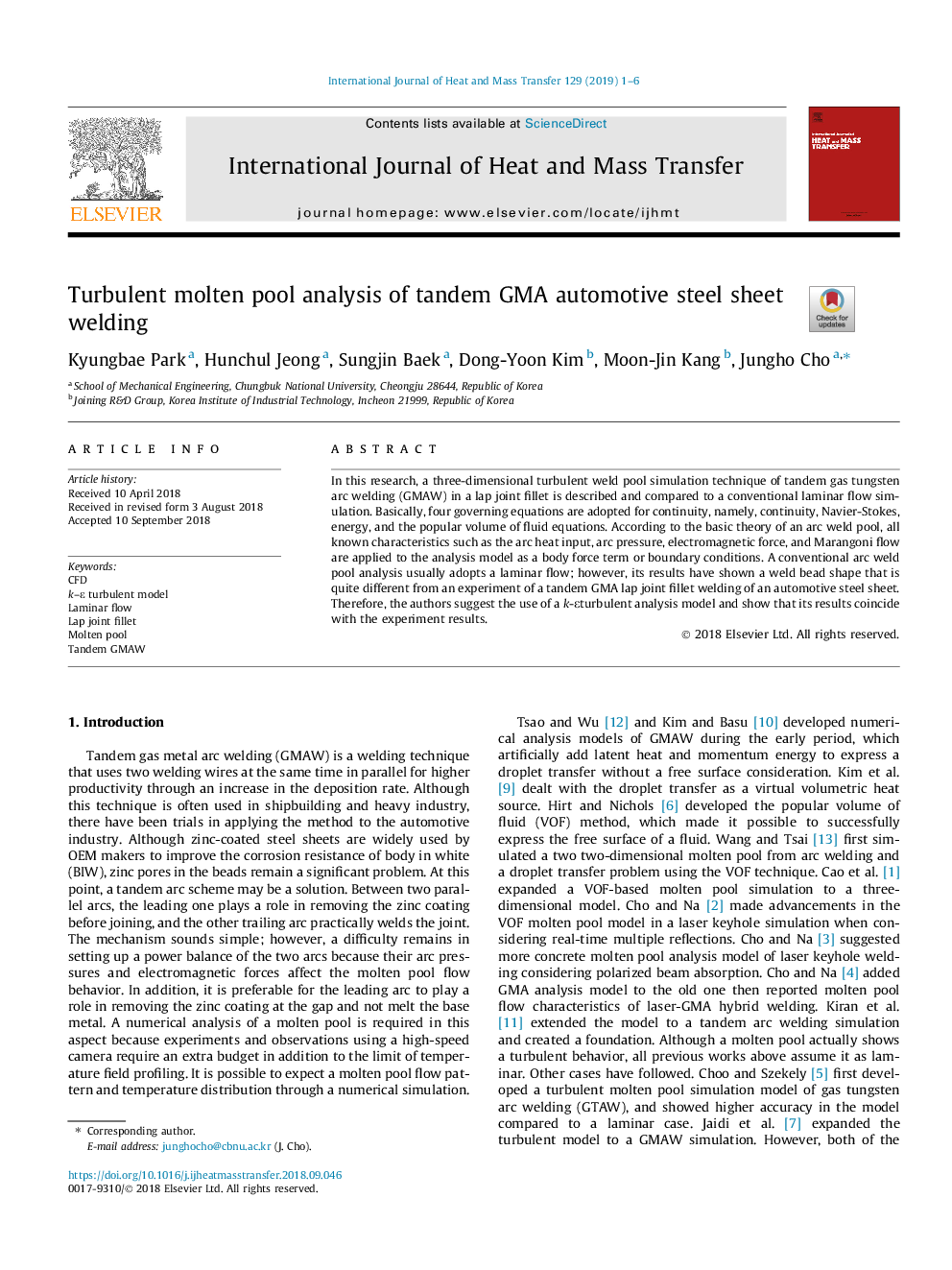| Article ID | Journal | Published Year | Pages | File Type |
|---|---|---|---|---|
| 10226146 | International Journal of Heat and Mass Transfer | 2019 | 6 Pages |
Abstract
In this research, a three-dimensional turbulent weld pool simulation technique of tandem gas tungsten arc welding (GMAW) in a lap joint fillet is described and compared to a conventional laminar flow simulation. Basically, four governing equations are adopted for continuity, namely, continuity, Navier-Stokes, energy, and the popular volume of fluid equations. According to the basic theory of an arc weld pool, all known characteristics such as the arc heat input, arc pressure, electromagnetic force, and Marangoni flow are applied to the analysis model as a body force term or boundary conditions. A conventional arc weld pool analysis usually adopts a laminar flow; however, its results have shown a weld bead shape that is quite different from an experiment of a tandem GMA lap joint fillet welding of an automotive steel sheet. Therefore, the authors suggest the use of a k-εturbulent analysis model and show that its results coincide with the experiment results.
Keywords
Related Topics
Physical Sciences and Engineering
Chemical Engineering
Fluid Flow and Transfer Processes
Authors
Kyungbae Park, Hunchul Jeong, Sungjin Baek, Dong-Yoon Kim, Moon-Jin Kang, Jungho Cho,
